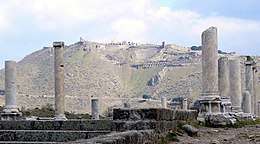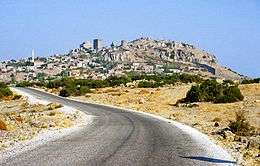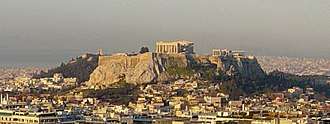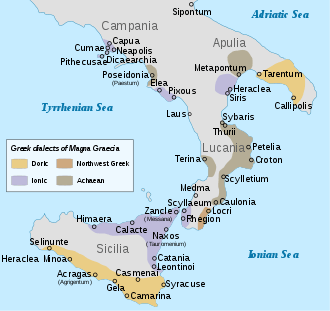Acropolis
An acropolis (Ancient Greek: ἀκρόπολις, akropolis; from akros (άκρος) or akron (άκρον), "highest, topmost, outermost" and polis (πόλις), "city"; plural in English: acropoles, acropoleis or acropolises)[1] was in ancient Greece a settlement, especially a citadel, built upon an area of elevated ground—frequently a hill with precipitous sides, chosen for purposes of defense.[2] Acropolis also had a function of a religious sanctuary with sacred springs highlighting its religious significance.[3] Acropolis became the nuclei of large cities of classical antiquity, such as ancient Athens, and for this reason they are sometimes prominent landmarks in modern cities with ancient pasts, such as modern Athens. One well-known acropolis is the Acropolis of Athens, located on a rocky outcrop above the city of Athens and containing the Parthenon.
Use in antiquity


The word acropolis literally means in Greek "upper city," and though associated primarily with the Greek cities Athens, Argos (with Larissa), Thebes (with Cadmea), and Corinth (with its Acrocorinth), may be applied generically to all such citadels, including Rome, Jerusalem, Celtic Bratislava, many in Asia Minor, or even Castle Rock in Edinburgh. An example in Ireland is the Rock of Cashel. Acropolis is also the term used by archaeologists and historians for the urban Castro culture settlements located in Northwestern Iberian hilltops.
The most famous example is the Acropolis of Athens,[4] which, by reason of its historical associations and the several famous buildings erected upon it (most notably the Parthenon), is known without qualification as the Acropolis. The Acropolis of Athens achieved its form in the fifth century BC and is currently an archeological site.[3] Although originating in the mainland of Greece, use of the acropolis model quickly spread to Greek colonies such as the Dorian Lato on Crete during the Archaic Period
Metaphorical use in modern times
Because of its classical Hellenistic style, the ruins of Mission San Juan Capistrano's Great Stone Church in California, United States has been called the "American Acropolis".[5]
Other parts of the world developed other names for the high citadel or alcázar, which often reinforced a naturally strong site. In Central Italy, many small rural communes still cluster at the base of a fortified habitation known as la Rocca of the commune.
The term acropolis is also used to describe the central complex of overlapping structures, such as plazas and pyramids, in many Maya cities, including Tikal and Copán.
References
- acropolis, akros, akron. Liddell, Henry George; Scott, Robert; A Greek–English Lexicon at the Perseus Project.
- "acropolis – Definition of acropolis in English by Oxford Dictionaries". Oxford Dictionaries – English.
- Caves, R. W. (2004). Encyclopedia of the City. Routledge. p. 4.
- Centre, UNESCO World Heritage. "Acropolis, Athens". UNESCO World Heritage Centre.
- Davis, Erik (2006). The visionary state : a journey through California's spiritual landscape. San Francisco: Chronicle Books. p. 20. ISBN 0811848353.
External links

- The Acropolis of Athens (Greek Government website)
- The Acropolis Restoration Project (Greek Government website)
- UNESCO World Heritage Centre — Acropolis, Athens
- Acropolis Museum
- The Parthenon Frieze (Hellenic Ministry of Culture web site)
- Acropolis: description, photo album
- The Acropolis: A Walk Through History

